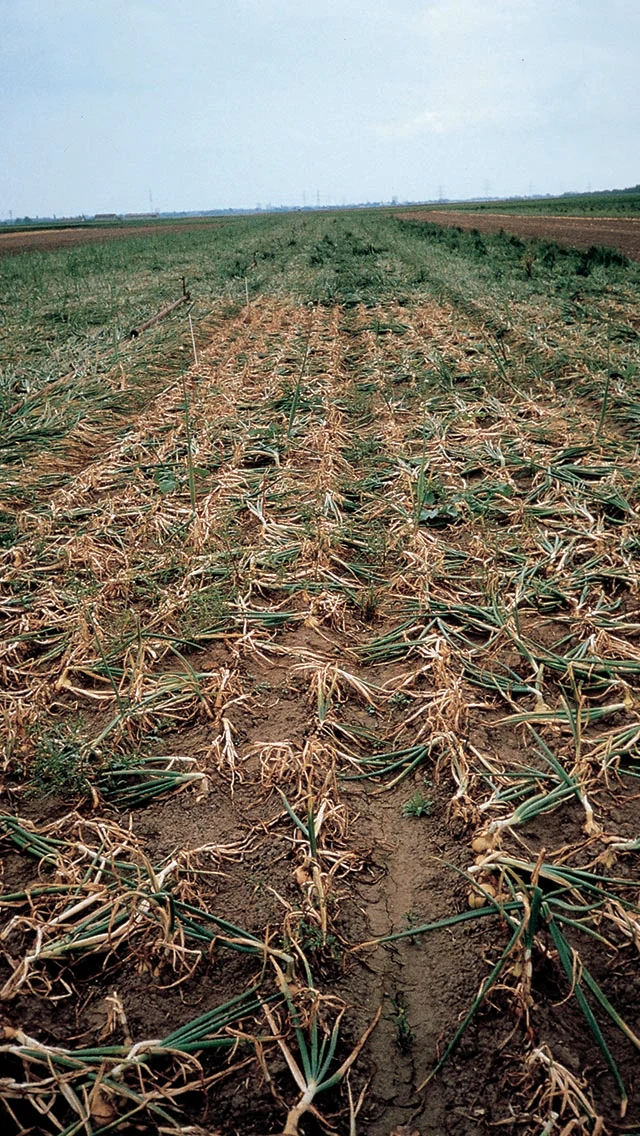
White Rot - Leeks/Onions
Sclerotuim cepivorum
Pathogen
Fungus
Hosts
Onions, leeks, chives, shallots and garlic
Symptoms
Initially symptoms are yellowing and wilting of plants leaves in patches within the crop. After the collapse of the leaves a rot sets in with a mycelial white cotton wool growth around the base of the bulb with small black (0.5 - 1mm across) sclerotia embedded within.
Leeks are affected to a lesser extent and can also be found in chives, shallots and garlic.
Development
The sclerotia can survive in the soil for many years (with some sources suggesting this could be as long as 15 – 20 years). With soil temperatures above 10 °c these germinate, in response to Allium root exudates, to produce mycelial hyphae which directly invade plant roots. Once a plant has been colonised the mycelium can spread to nearby adjacent plants via contact with roots or bulbs or can move short distances through the soil usually along the crop row.
Favourable Factors
Warm soil temperatures above from mid-summer until early autumn.
Importance
One of the most significantly important worldwide diseases of onions.
Affected bulbs are unmarketable.
Control
Crop hygiene
Clean equipment when moving from one field to the next
Long crop rotation
Spraying garlic extractions, well before planting, to encourage sclerotia to germinate, in the absence of Allium host plants the disease will not be able to complete its life-cycle.
Application of fungicides at planting or in the seed row

Symptoms on bulb


